Mystical Essence of Anahita: Goddess, River, and Myth
The name "Anahita" carries a mystique that spans both ancient and modern realms, intertwining the threads of history, mythology, and cultural significance.
Anahita serves as a timeless link between antiquity and contemporary society. In ancient Persian mythology, Anahita was revered as a powerful goddess, symbolizing fertility, healing, and the vital flow of water. She graced the pantheon of deities, capturing the imagination of a civilization that drew sustenance from the life-giving waters of her mythic presence.
In this Article, we dive into the enigmatic essence of Anahita and uncover the layers of meaning it holds in various contexts.
Historical and Cultural Origins of Anahita
The origins of Anahita are shrouded in the mists of time, as ancient as the cradle of human civilization itself. Emerging from the heart of Persia, the concept of Anahita is deeply rooted in the cultural and historical tapestry of the region. Her name, often associated with purity and untamed waters, reflects the reverence ancient Persians held for the life-giving element of water.
Anahita in Ancient Persian Mythology and Religion

In the annals of ancient Persian mythology and religion, Anahita ascended to a celestial status. She embodied the very essence of femininity, representing the ideals of beauty, fertility, and motherhood. Anahita was considered the source of all life-giving waters, from rivers and lakes to the flowing streams that sustained the land. Her benevolent influence extended to the agricultural realm, ensuring bountiful harvests and the prosperity of her devotees.
Anahita was often depicted wearing a crown of stars and holding a vessel from which she poured the sacred waters of life. Her presence was invoked in rituals and ceremonies, underscoring her pivotal role in Persian spirituality. As a protector of women and children, she offered solace and protection to those in need.
| Suggestion: Cyrus The Great – The Most Powerful King in The World
Historical Artifacts and Texts Related to Anahita
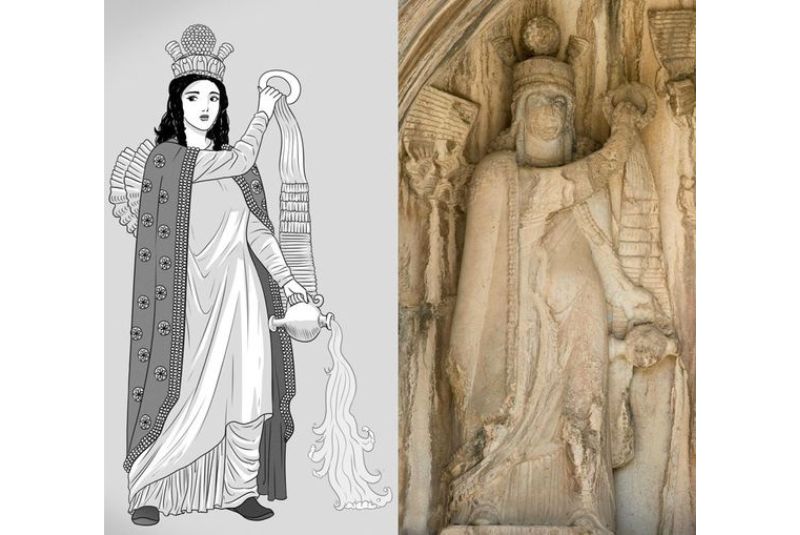
The legacy of Anahita is imprinted in the annals of history through various artifacts and texts. Ancient inscriptions and carvings on rock reliefs, such as those at Kangavar in Iran, bear testament to her significance in the ancient world. These inscriptions, often in Old Persian cuneiform script, mention offerings and dedications made to Anahita.
Additionally, ancient texts like the "Avesta," the primary collection of religious texts in Zoroastrianism, contain references to Anahita. She is hailed as one of the "yazatas" or divine spirits, reflecting her elevated status in the religious pantheon.
The mention of Anahita in these historical artifacts and texts offers a tantalizing glimpse into the reverence and veneration that she commanded in the ancient Persian world. As we journey deeper into the enigmatic realm of Anahita, we shall uncover more facets of her divine persona and her enduring presence in the pages of history.
Anahita as a Goddess

In the rich tapestry of ancient Persian mythology, Anahita shines as a radiant and revered goddess, embodying a multitude of virtues and powers. She is a celestial presence, often described as the "Immaculate" or the "Pure One," reflecting her divine essence. Anahita's significance extends far beyond her mythological realm; she is the embodiment of purity and abundance, an eternal source of life and fertility.
Anahita's attributes are as diverse as the flowing waters she represents. Her primary realm of influence lies in the nurturing and life-giving qualities of water. She is the guardian of rivers, lakes, and springs, and her benevolent touch ensures the fertility of the land. The sacred waters she bestows are not only physical but also spiritual, purifying the soul of those who seek her favor.
Often depicted as a regal figure, Anahita wears a crown adorned with stars, emphasizing her celestial connection. In her graceful hands, she cradles a vessel from which the waters of life flow, symbolizing her role as a bestower of abundance and vitality.
| Read more: Persian Griffin Meaning & Statue
Anahita Temple

The Anahita Temple, also known as the Temple of Anahita or the Aredvi Sura Anahita Temple, is a significant archaeological and historical site associated with the worship of the goddess Anahita. This temple stands as a testament to the reverence accorded to the goddess in ancient Persia and provides valuable insights into the religious practices and architectural achievements of that era.
The Anahita Temple is believed to date back to the Parthian period (ca. 247 BCE - 224 CE) and was later expanded during the Sassanid Empire (224-651 CE), attesting to the enduring popularity of Anahita's cult throughout the centuries. Located in modern-day Iran, the temple was strategically situated near the ancient city of Kangavar.
Architectural Features

The architecture of the Anahita Temple is notable for its grandeur and intricacy. The temple's design reflects the Zoroastrian tradition, with fire altars and water features. It consists of a central hall and several smaller chambers, showcasing the sophistication of ancient Persian engineering and artistry.
One of the most striking features of the temple is its colossal stone columns adorned with intricate carvings and inscriptions. These columns, each over 13 meters in height, create a majestic ambiance within the temple precincts.
| Learn more: Towers of Silence | Zoroastrian Burial Culture
Religious Practices
The Anahita Temple served as a sacred site for the veneration of Anahita, the goddess of fertility and water. Pilgrims and devotees visited the temple to offer prayers, sacrifices, and tributes to seek her blessings for abundant harvests, fertility, and protection. Water rituals, in particular, played a central role in the religious practices associated with Anahita.
The Anahita Temple stands as a testament to the enduring cultural heritage of Iran and the importance of goddess worship in ancient Persian society. It serves as a link between the past and the present, reminding us of the spiritual significance of Anahita and her enduring influence on the region's history.
The Importance in Ancient Persian Spirituality
Within the pantheon of ancient Persian deities, Anahita occupied a prominent and revered position. Her presence was felt in the company of other divine beings, each responsible for different aspects of existence. Anahita's role as the goddess of fertility and purity was pivotal, ensuring the prosperity and well-being of the land and its people.
Ancient Persian spirituality held Anahita in high regard, and her worship was woven into the fabric of daily life. Ceremonies and rituals dedicated to her were performed to invoke her blessings, especially during planting and harvest seasons when her influence was most keenly felt.
As a protector of women and children, Anahita was also invoked in times of need and adversity. Her divine presence provided solace and guidance, reflecting the deep connection between the goddess and the people of ancient Persia.
Intricately intertwined with the spiritual, cultural, and mythological aspects of ancient Persian society, Anahita's legacy endures as a symbol of purity, fertility, and the life-giving force of water. As we delve deeper into the layers of Anahita's influence, we will uncover the enduring mystique of this goddess and her profound impact on both past and present.
| Discover: Naqsh-e Rustam | Ancient Treasures & Zoroastrian Legacy
Anahita as a River
The connection between Anahita and a river is deeply ingrained in the cultural and geographical landscape of ancient Persia. One of the most notable manifestations of this connection is the Anahita River, which meanders through the heart of Iran. Anahita's association with this river transcends mere geography; it represents the fusion of mythology, nature, and spirituality.

Geographical and Ecological Significance of the Anahita River
The Anahita River, known today as the Karun River, holds immense geographical and ecological significance. Flowing through southwestern Iran, it carves a path through diverse landscapes, from lush green valleys to arid plains. Its waters are a lifeline, sustaining not only the land but also the communities that have flourished along its banks for millennia.
The river's ecological impact is profound. It irrigates vast expanses of farmland, facilitating agriculture and ensuring food security. The Anahita River's waters support a rich tapestry of flora and fauna, making it a crucial ecosystem within the region. The river's health and vitality are a testament to its life-sustaining qualities, mirroring the attributes associated with the goddess Anahita.
| Related: Shushtar Hydraulic System | Ancient Engineering Wonder
Historical and Cultural Practices Associated with the Anahita River
Throughout history, the Anahita River has played a central role in the lives of the people who call its shores home. Historical and cultural practices associated with the river have deep roots, reflecting the reverence for water as a source of life and fertility.
Ancient rituals and ceremonies were often conducted along the riverbanks to honor Anahita and seek her blessings. Offerings were made to appease the goddess, and the river's waters were considered sacred. The Anahita River became a conduit for spiritual communion and a symbol of the goddess's enduring presence.
In more contemporary times, the cultural significance of the Anahita River continues to be celebrated. Local festivals and events often pay homage to the river's vital role in the region's heritage, reinforcing the connection between the goddess and the waterway that bears her name.
The Anahita River, with its geographical, ecological, and cultural importance, serves as a tangible reminder of the deep-rooted reverence for Anahita and the life-giving properties she embodies. It is a testament to how mythology and nature intertwine, shaping the identity of a region and its people.
| Also might be interesting: Iran Windcatchers
Anahita in Modern Interpretations

Anahita's legacy, rooted in the annals of ancient Persian mythology and culture, has gracefully transcended the bounds of time, leaving an indelible mark on the modern world. As we step into contemporary times, we witness the enduring resonance of the goddess's name and her significance in various facets of today's society.
In modern times, Anahita's name and symbolism continue to find expression in art, literature, and popular culture. Her story, once confined to the pages of ancient texts, has inspired contemporary artists and writers to revisit her enigmatic persona. Paintings, sculptures, and literary works draw upon the rich tapestry of Anahita's mythological attributes, infusing them with fresh perspectives and interpretations.
Anahita's image as a goddess of purity and abundance resonates with those who seek to reconnect with nature and embrace sustainable practices. Her symbolism often finds a place in environmental movements and initiatives that aim to protect and restore the planet's water sources, emphasizing the vital role of rivers and clean water in our modern world.
| Related: Qanat, Underground Water Channels in Ancient Persia

Revival of Interest in Anahita and Her Symbolism
In recent years, there has been a noticeable revival of interest in Anahita and her symbolism, both within and outside the Persian community. Scholars, historians, and spiritual seekers have delved into the depths of her mythology, shedding new light on her multifaceted character. This resurgence of curiosity has led to a deeper understanding of the goddess's role in ancient Persian spirituality and its relevance in today's interconnected world.
Contemporary followers of Zoroastrianism, the ancient religion of Persia, also pay homage to Anahita, acknowledging her as a divine presence that continues to inspire faith and devotion. Ceremonies and rituals that invoke her blessings have not faded into oblivion but have adapted to modern practices, affirming her enduring relevance in religious contexts.
Anahita's Influence on Other Cultures
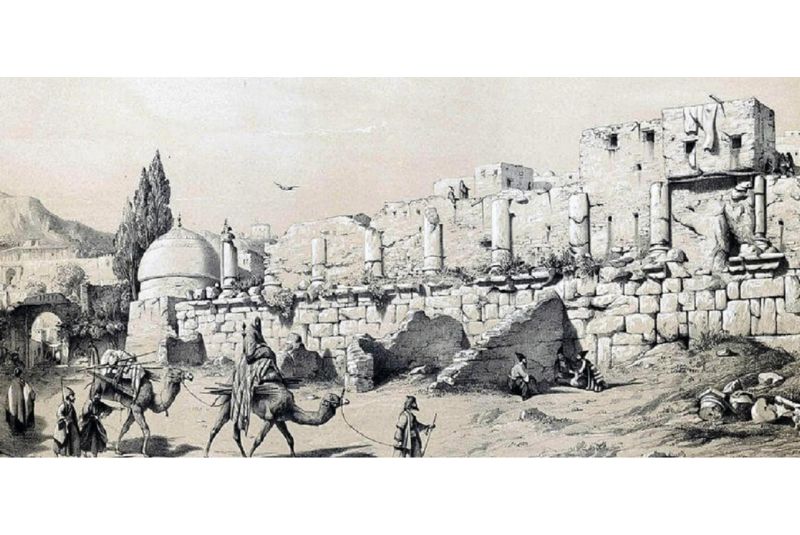
Anahita's influence transcends the boundaries of her ancient Persian origins, casting a wide-reaching and enduring spell that extends to other cultures and belief systems. As we delve into the multifaceted tapestry of her legacy, we uncover intriguing connections and comparisons with similar goddesses and deities across different civilizations.
- Isis (Ancient Egypt): Anahita's attributes and roles bear striking resemblances to those of Isis, the revered goddess of ancient Egypt. Both goddesses were associated with life-giving waters and held positions of maternal and nurturing power. Isis, like Anahita, was seen as a protector of women and children, embodying the ideals of femininity, fertility, and motherhood.
- Aphrodite (Ancient Greece): In the pantheon of ancient Greek deities, Aphrodite shares certain similarities with Anahita. Aphrodite, the goddess of love and beauty, possessed an ethereal allure and was considered the embodiment of feminine charm. Similarly, Anahita's depiction as a radiant and beautiful goddess reflects her role as a symbol of purity and allure.
- Danu (Celtic Mythology): In Celtic mythology, the goddess Danu bears a resemblance to Anahita in her association with rivers and fertility. Danu is often linked to rivers and water as sources of life and abundance, mirroring the reverence accorded to Anahita in the ancient Persian context.
- Yemaya (Yoruba Religion): Yemaya, a prominent deity in the Yoruba religion of West Africa, shares thematic parallels with Anahita. She is considered the goddess of the ocean and is revered for her maternal and nurturing qualities. Like Anahita, Yemaya's connection to water symbolizes fertility and the life-giving force of the seas.
- Varuna (Hinduism): In Hinduism, Varuna, the god of cosmic order and water, bears some resemblance to Anahita in his association with the vital element of water. Varuna is a guardian of cosmic order and purity, reflecting themes present in Anahita's mythology.
These cross-cultural connections and comparisons underscore the universal appeal and significance of deities associated with water, fertility, and feminine attributes. Anahita's influence, while deeply rooted in ancient Persian culture, echoes across time and space, reminding us of the enduring power of these archetypal figures in shaping the collective human imagination.
| Suggestion: Pasargadae | Legacy of Cyrus the Great & Ancient City
Anahita in Art and Literature
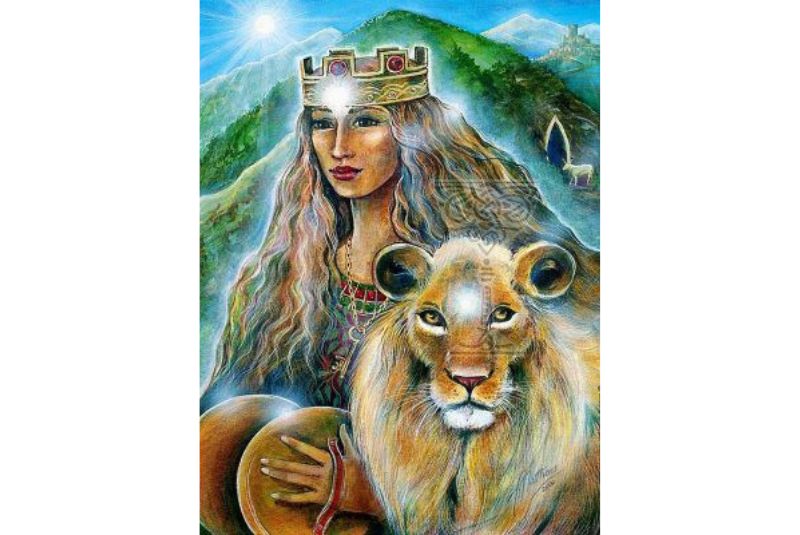
Throughout history, Anahita's captivating persona has served as a wellspring of inspiration for artists and writers across cultures. Her image has been brought to life through various forms of creative expression, allowing us to glimpse the enduring allure of this ancient goddess.
Artistic Depictions of Anahita
- Ancient Persian Art: In ancient Persia, Anahita was often depicted in sculptures, carvings, and jewelry. These representations showcased her as a regal figure with a crown of stars, holding a vessel from which life-giving waters flowed. These artistic renderings emphasized her divine attributes and purity.
- Contemporary Art: Modern artists continue to draw upon Anahita's imagery in their works. Paintings and sculptures capture the goddess's grace and beauty, often placing her in lush natural settings to underscore her connection to water and fertility.
Literary Representations of Anahita
- Ancient Texts: Anahita finds mention in ancient Persian texts, including the "Avesta." Here, she is celebrated as a divine entity, embodying qualities of purity and abundance. Poetic hymns and verses dedicated to Anahita evoke her blessings and protection.
- Modern Literature: In contemporary literature, Anahita's mythological persona is reimagined and explored in new ways. Authors draw upon her symbolism to weave tales of mysticism, romance, and empowerment. Her character often serves as a source of inspiration for strong and independent female protagonists.
Artistic and Literary Symbolism Associated with Anahita
The artistic and literary representations of Anahita are laden with symbolism that reflects her multifaceted character:
- Crown of Stars: Anahita's crown of stars symbolizes her celestial nature, highlighting her connection to the heavens and her status as a divine being.
- Vessel of Life: The vessel from which she pours the waters of life represents her role as a bestower of abundance and fertility. It is a potent symbol of sustenance and vitality.
- Natural Settings: Many artistic depictions place Anahita in idyllic natural landscapes, such as riversides and lush gardens. This symbolism emphasizes her association with the life-giving force of water and the fertility of the land.
- Feminine Grace: Anahita's portrayal as a beautiful and graceful goddess underscores her embodiment of feminine ideals, including purity, beauty, and maternal care.
In both art and literature, Anahita's symbolism serves as a timeless source of inspiration, inviting artists and writers to explore themes of beauty, purity, fertility, and the enduring power of the natural world. Through their creative expressions, they breathe life into the enigmatic essence of Anahita, ensuring that her legacy continues to captivate and inspire generations to come.
| Discover: Susa Persia; One of the Oldest Cities in the World
Anahita Today
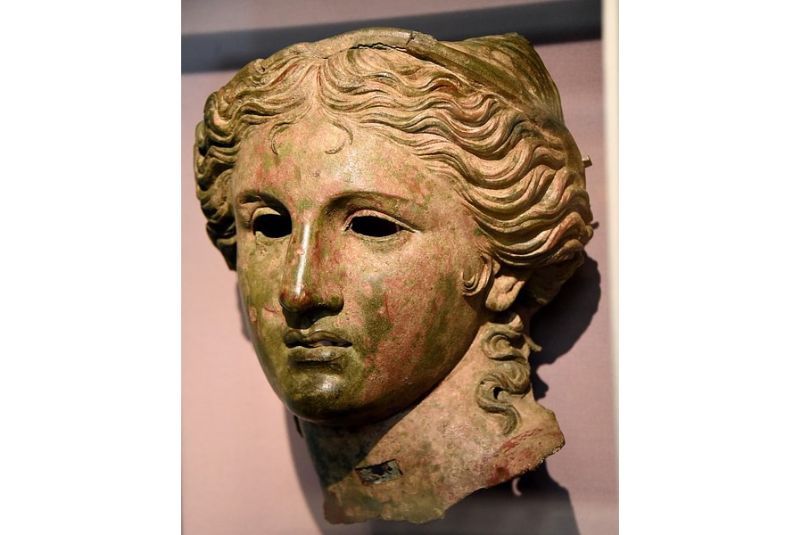
While the worship of Anahita in its ancient form has evolved over the centuries, the goddess continues to hold a special place in the hearts of people in contemporary Iran and beyond. Her legacy endures through various cultural and spiritual practices, offering a window into the enduring reverence for this ancient Persian deity.
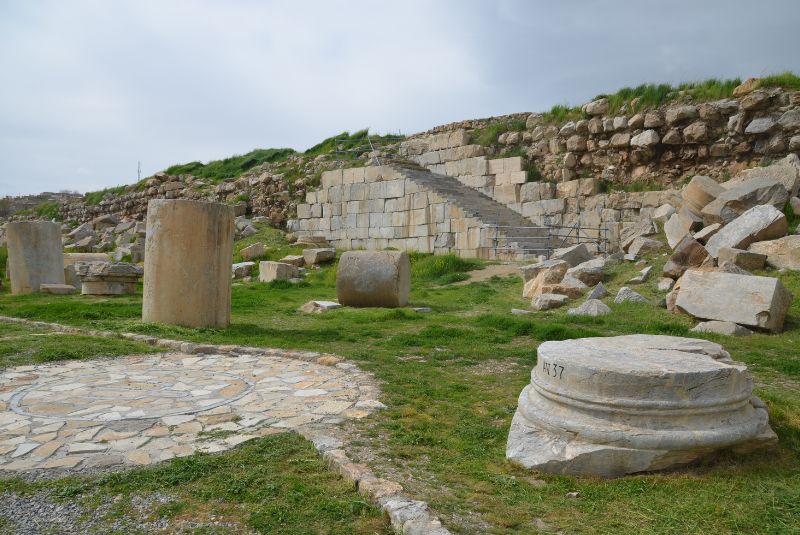
Festivals and Rituals Honoring Anahita Today
- Nowruz (Iranian New Year): Anahita's presence is deeply intertwined with the celebration of Nowruz, the Iranian New Year, which marks the vernal equinox. One of the essential elements of Nowruz is the "Haft-Seen" table, where seven symbolic items starting with the Persian letter "S" are displayed. "Sekkeh" (coins) represent wealth, "Sabzeh" (sprouted wheat or barley) symbolizes rebirth and growth, and "Seer" (garlic) signifies medicine and health. Another item often included is "Samanu," a sweet pudding made from wheat germ, which pays homage to Anahita as the goddess of fertility.
- Mehragan Festival: In Zoroastrian tradition, the "Mehr" or "Mithra" festival is celebrated in honor of the god Mithra, often associated with the Sun. However, the presence of Mithra alongside Anahita in these celebrations reflects their interconnected roles. Although this festival is not as widely observed today, it signifies the enduring recognition of Anahita and her divine counterpart in ancient rituals.
- Cultural References: In contemporary Iranian culture, references to Anahita can be found in literature, art, and even in the naming of individuals, particularly girls. Her name carries a sense of grace and femininity, making it a choice for those who seek to honor the goddess's enduring legacy.
- Spiritual Revival: In recent years, there has been a resurgence of interest in ancient Persian spirituality and Zoroastrianism. Some individuals and groups seek to revive and adapt the worship of Anahita and other deities within a modern context. These spiritual revivals aim to reconnect with the goddess's essence and the values she represents, including purity, fertility, and the sanctity of water.
- Cultural Heritage Preservation: Efforts are underway in Iran to preserve and protect the historical and archaeological sites associated with Anahita, including the Anahita Temple in Kangavar. These preservation initiatives help ensure that the goddess's legacy is safeguarded for future generations.
Final Takeaway
Throughout history, Anahita has been a revered figure in ancient Persian mythology and religion. She was the guardian of rivers, lakes, and springs, ensuring the prosperity of the land and its people. Her attributes, powers, and symbolism painted a portrait of divine grace and beauty, inviting devotion and reverence.
let us contemplate the idea that Anahita's story, like the flowing waters she represents, continues to shape our lives and inspire our imaginations. How might her timeless qualities of purity, fertility, and the sanctity of water find resonance in our modern world, where the need for environmental stewardship and spiritual connection remains as vital as ever? Anahita, the ancient goddess, beckons us to explore these questions and discover the profound and enduring wisdom hidden within her mythic embrace.


Comment
Leave a Comment